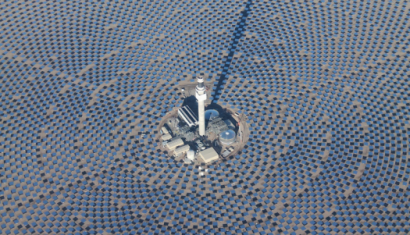
CSP technologies use mirrors to reflect and concentrate sunlight onto a focused point where it is collected and converted into heat. This thermal energy can be stored and used to produce electricity whenever it is needed. The best commercially available technologies can only reach 565 °C. The high-temperature thermal systems targeted by this program seek to achieve at least 700 °C, which would boost the efficiency and lower the cost of the electricity.
Through the Generation 3 CSP (Gen3 CSP) program, three teams have been selected to compete to build an integrated system that can efficiently receive solar heat and deliver it to a working fluid at greater than 700 °C temperature, while incorporating thermal energy storage. Over the first two-year period, those teams will work on various aspects of diversified CSP technology pathways, prepare a detailed design for a test facility, and be subjected to a rigorous review process to select a single awardee to construct their proposed facility. If selected, they will receive an additional $25 million over the subsequent three years to build a test facility that allows diverse teams of researchers, laboratories, developers and manufacturers to remove key technological risks for the next generation CSP technology. Those awardees and their phase one funding include:
In addition to this process, eight awardees have been selected to develop either component-level technology or utilize unique cross-cutting research capabilities that support the goal of a successful integrated testing site. Those awardees include:
DOE has provided an additional $10 million in funding to national labs to support this work. These projects will help to expand the foundational knowledge necessary to building this test site. Partnered labs include:
Learn more about the awardees in this program HERE. Learn more about DOE Solar Energy Technologies Office HERE.

